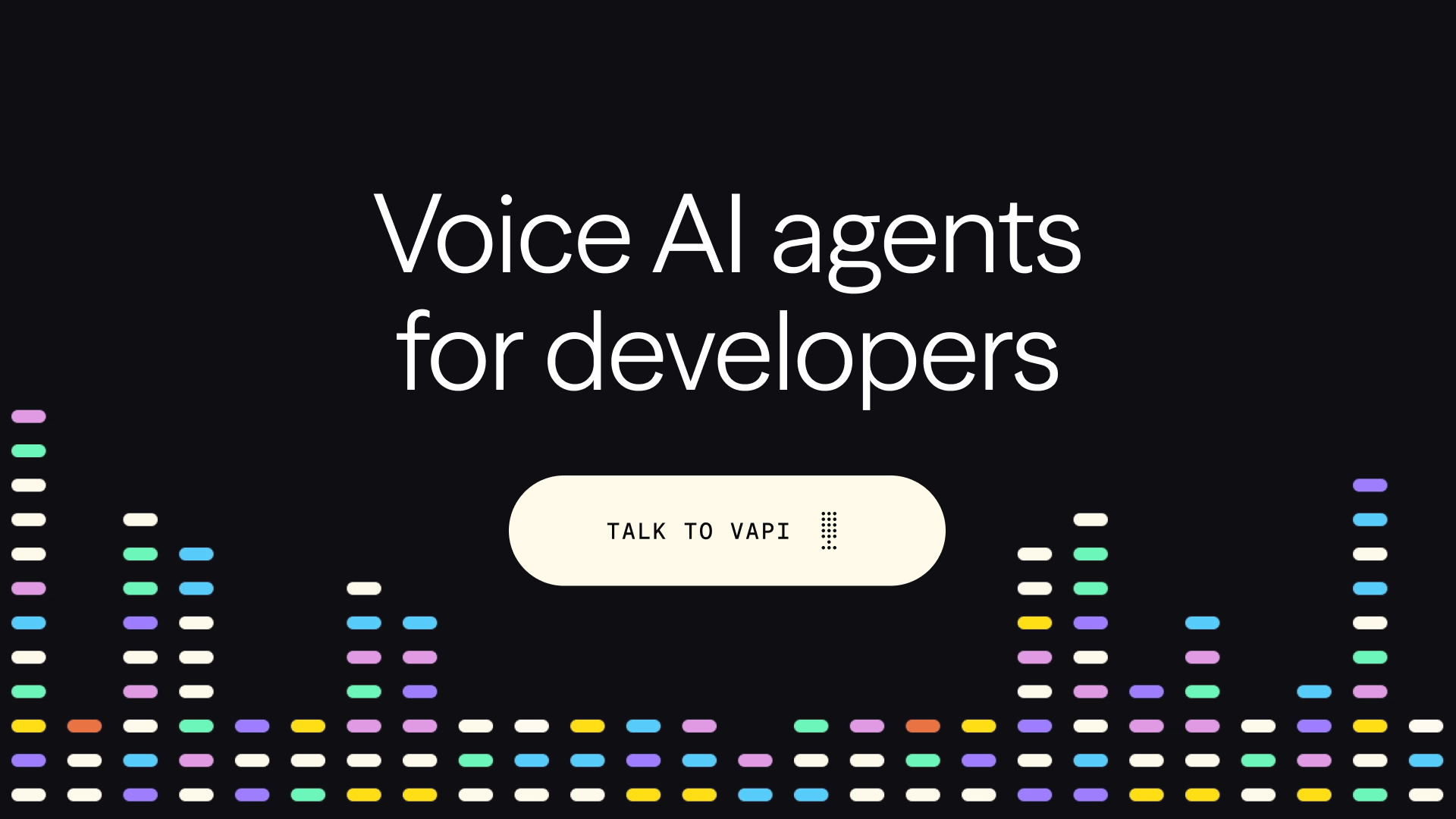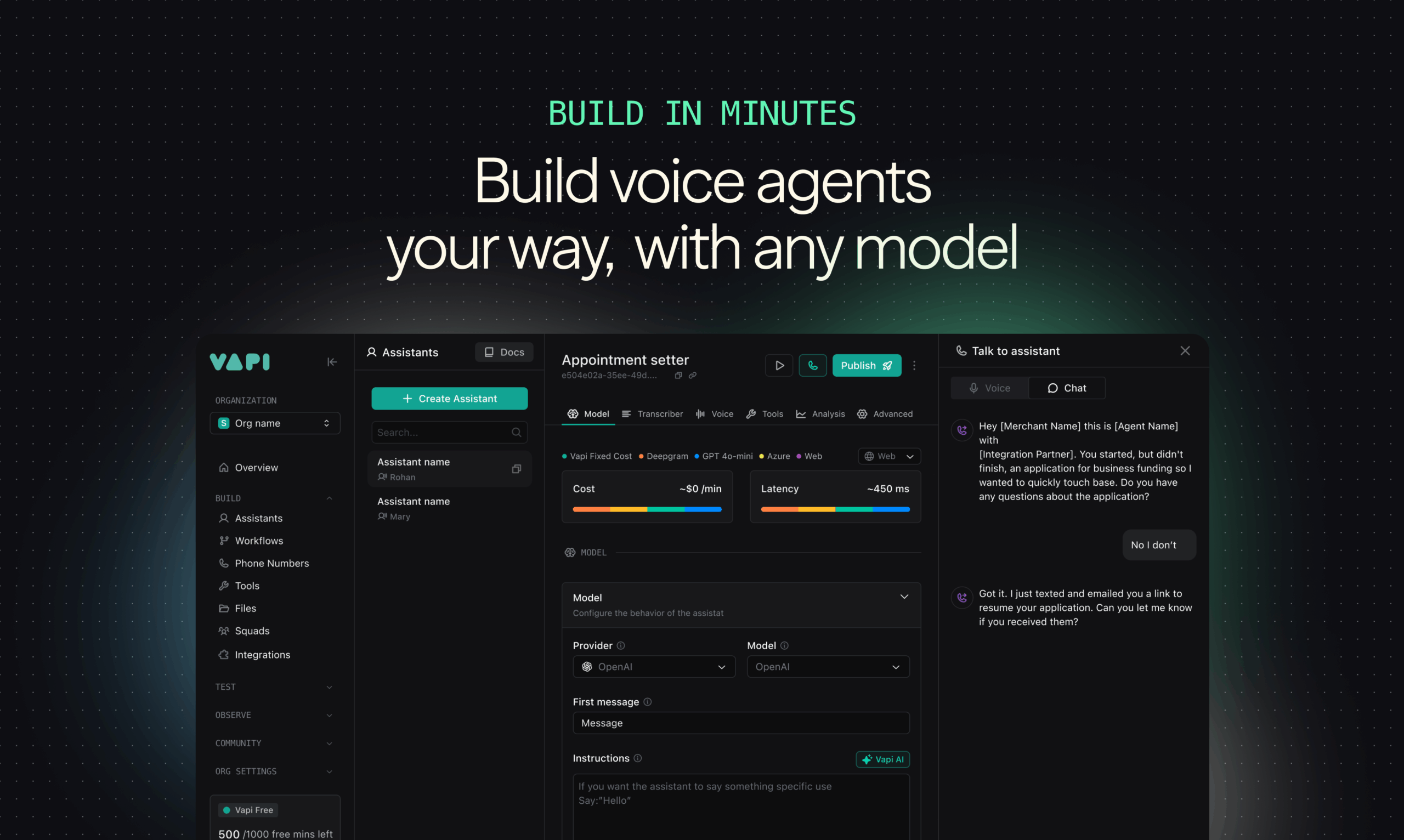
Table of Contents
Overview
In today’s fast-paced world, automation is key to staying competitive. Vapi emerges as a powerful voice AI platform, designed to simplify the creation and deployment of scalable voice agents. Whether you’re looking to enhance customer service, streamline appointment scheduling, or revolutionize your marketing efforts, Vapi offers the tools and infrastructure to build, test, and run real-time conversational voice agents. Let’s dive into what makes Vapi a compelling option for businesses seeking to leverage the power of voice AI.
Key Features
Vapi boasts a robust set of features designed to empower developers and businesses alike:
- Real-time voice agents: Create interactive voice experiences that respond dynamically to user input, enabling seamless conversations.
- Custom voice model integration: Leverage pre-built voice models or integrate your own custom voice models for a truly personalized experience.
- Call routing and management: Efficiently manage inbound and outbound calls with intelligent routing and call control features.
- API and SDK support: Integrate Vapi’s capabilities into your existing applications and workflows with comprehensive API and SDK support.
- Multi-platform deployment: Deploy your voice agents across various platforms, including web, mobile, and telephony systems, ensuring broad accessibility.
How It Works
Vapi simplifies the process of creating and deploying voice agents. Developers utilize Vapi’s API and intuitive web interface to craft their agents. This involves selecting or uploading voice models that align with their brand and target audience. Next, they script interactions, defining the conversational flow and responses. Finally, they set up call workflows, specifying how calls are handled and routed. The platform then takes over, managing call handling, real-time transcription, and dynamic dialogue management, ensuring a smooth and engaging user experience.
Use Cases
Vapi’s versatility makes it suitable for a wide range of applications:
- Customer service automation: Automate routine customer inquiries and support tasks, freeing up human agents to handle more complex issues.
- Appointment scheduling: Streamline the appointment booking process with voice-enabled scheduling and reminders.
- Inbound lead handling: Qualify and route inbound leads efficiently with automated voice interactions.
- Voice bots for marketing: Engage potential customers with interactive voice bots that deliver personalized marketing messages.
- IVR system replacement: Modernize outdated IVR systems with intelligent voice agents that provide a more intuitive and efficient user experience.
Pros & Cons
Like any platform, Vapi has its strengths and weaknesses. Let’s take a closer look:
Advantages
- Easy integration: Vapi’s API and SDKs make it easy to integrate voice AI into existing systems and workflows.
- High-quality voice models: Benefit from a selection of high-quality voice models that deliver natural and engaging conversations.
- Scalable architecture: Vapi’s architecture is designed to scale with your business needs, ensuring reliable performance even during peak call volumes.
- Active developer community: Access a supportive community of developers who can provide assistance and share best practices.
- Continuous updates: Vapi is continuously updated with new features and improvements, ensuring you always have access to the latest technology.
Disadvantages
- Premium features require subscription: Access to advanced features and capabilities requires a paid subscription.
- Learning curve for scripting complex flows: Scripting complex conversational flows may require some initial training and familiarization.
How Does It Compare?
When evaluating voice AI platforms, it’s essential to consider the competition. Here’s how Vapi stacks up against some key players:
- Twilio: While Twilio offers broader API coverage, it lacks Vapi’s dedicated focus on voice AI and conversational experiences.
- AssemblyAI: AssemblyAI excels in transcription capabilities, but its interactivity features are more limited compared to Vapi.
Final Thoughts
Vapi presents a compelling solution for businesses seeking to harness the power of voice AI. Its ease of integration, high-quality voice models, and scalable architecture make it a strong contender in the market. While the premium features require a subscription and scripting complex flows may involve a learning curve, the benefits of automating customer service, streamlining appointment scheduling, and enhancing marketing efforts can significantly outweigh the drawbacks. If you’re ready to explore the potential of voice AI, Vapi is definitely worth considering.

